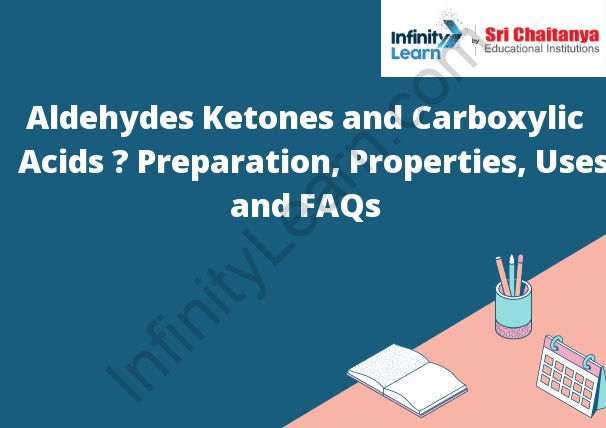Table of Contents
What are Aldehydes Ketones and Carboxylic Acids? ; What are Aldehydes? ; What are Ketones? ; What is Carboxylic Acid? ;
Aldehydes are organic compounds that contain a carbon-oxygen double bond and a single carbon-hydrogen bond. The carbon atom in the double bond is called the carbonyl carbon. The aldehyde functional group is represented by the symbol -CHO. Aldehydes are always molecules.
Ketones are organic compounds that contain a carbon-oxygen double bond and two carbon-hydrogen bonds. The carbon atom in the double bond is called the carbonyl carbon. The ketone functional group is represented by the symbol -CO- ketones are always molecules.
Carboxylic acids are organic compounds that contain a carbon-oxygen double bond and a single carbon-hydrogen bond. The carbon atom in the double bond is called the carbonyl carbon. The carboxylic acid functional group is represented by the symbol -COOH. Carboxylic acids are always molecules.

Preparation of Aldehydes
from Alcohols
Aldehydes are prepared from alcohols by the process of oxidation. In this process, the alcohol is oxidized to an aldehyde by the use of an oxidizing agent. The most common oxidizing agent used for this purpose is potassium permanganate.
Properties of Aldehydes
and Ketones
Aldehydes and ketones are organic molecules that share some common properties. Both molecules contain a carbonyl group, which is a carbon atom double-bonded to an oxygen atom. This carbonyl group is responsible for the shared properties.
Aldehydes and ketones are both polar molecules. This means that they have a positive and negative end. The positive end is called the carbonyl carbon, and the negative end is called the oxygen atom. Because of their polarity, aldehydes and ketones are soluble in water.
Aldehydes and ketones are also both reactive molecules. This means that they are easily able to form new bonds with other molecules. The carbonyl group is especially reactive, and it is this group that gives aldehydes and ketones their characteristic smell.
Preparation of Ketones
Ketones are a class of organic compounds that contain a carbonyl group (C=O) bonded to two carbon atoms. In ketones, the carbonyl carbon is attached to two other carbon atoms, which can be either alkyl or aryl groups.
One way to prepare ketones is to react an alcohol with an acid chloride in the presence of a base. The acid chloride is an organochlorine compound that contains a chlorine atom attached to a carbon atom. In this reaction, the alcohol is converted into a ketone and the chloride ion is released. The reaction can be represented by the following equation:
RCOOH + Cl-RCOCL + H2O
The most common acid chloride used in this reaction is phosgene, COCl2. Phosgene is a colorless, toxic gas that was used as a chemical weapon in World War I.
Properties of Ketones
The general properties of ketones are that they are soluble in water and polar solvents, they are good organic solvents, they are good fuels, and they are electrophilic.
Preparation of Carboxylic Acids
The carboxylic acids are prepared by the oxidation of the alcohols. The alcohols are oxidized to aldehydes and then to acids.
The aldehydes are oxidized to acids by using a strong oxidizing agent, such as nitric acid or potassium permanganate.
The mechanism for the oxidation of an alcohol to an aldehyde is shown below.
The mechanism for the oxidation of an aldehyde to an acid is shown below.
Properties of Carboxylic Acids
The general properties of carboxylic acids include:
1. Carboxylic acids are organic compounds that contain a carboxyl group (COOH).
2. Carboxylic acids are weak acids that ionize in water to form carboxylate ions (COO-).
3. Carboxylic acids have a sour taste and are used in food preservation.
4. Carboxylic acids are used in the production of plastics, synthetic fibers, and other chemicals.









